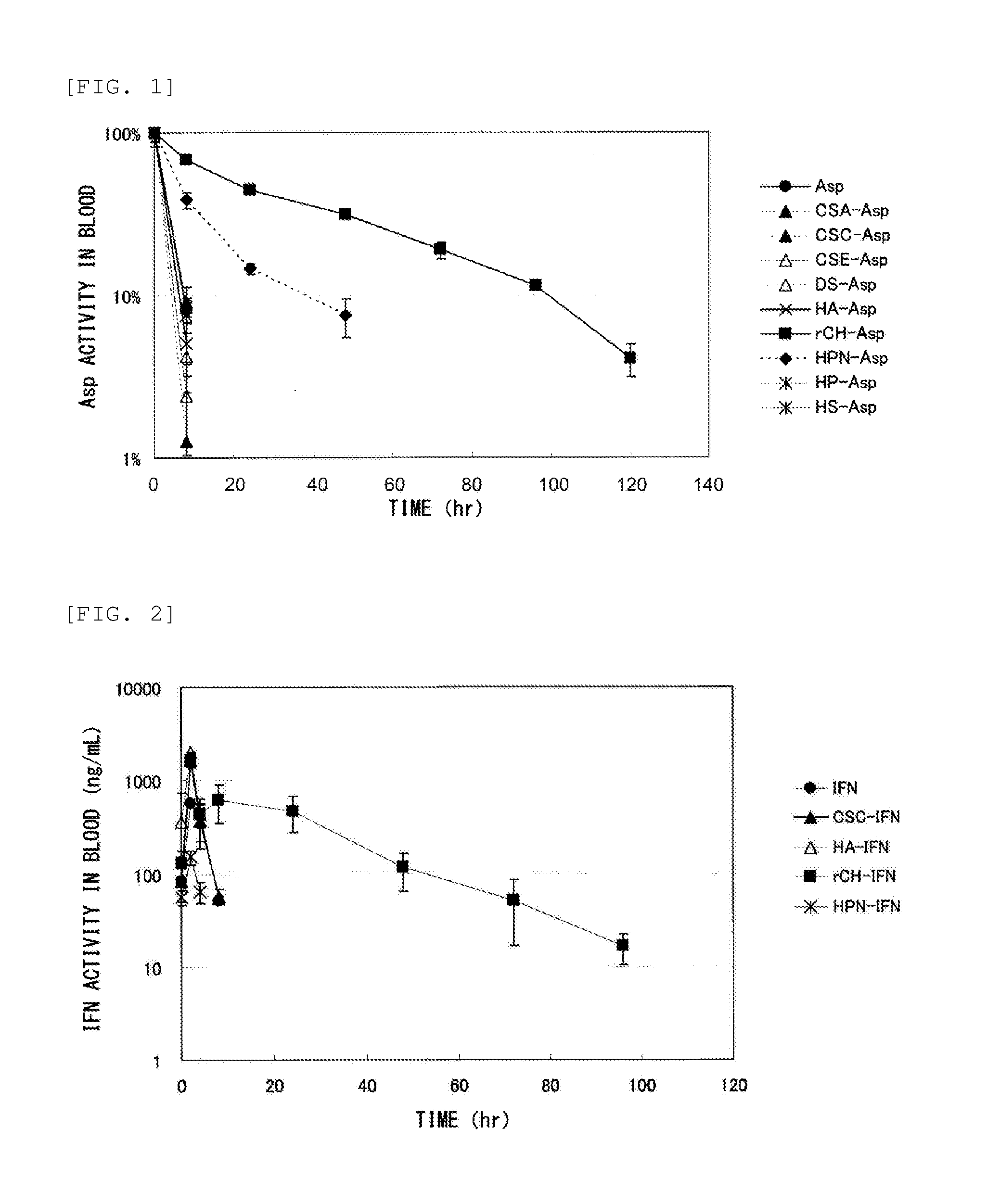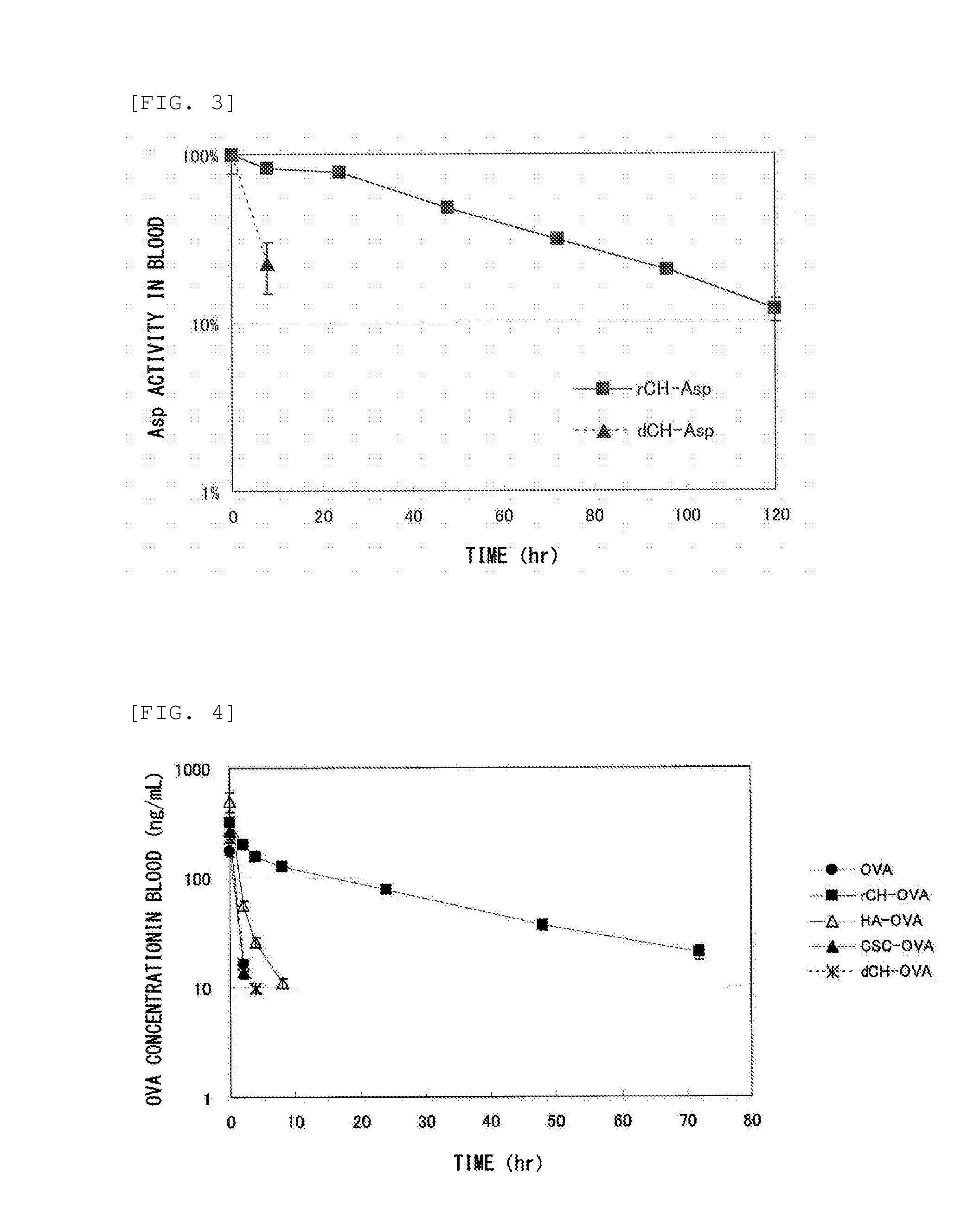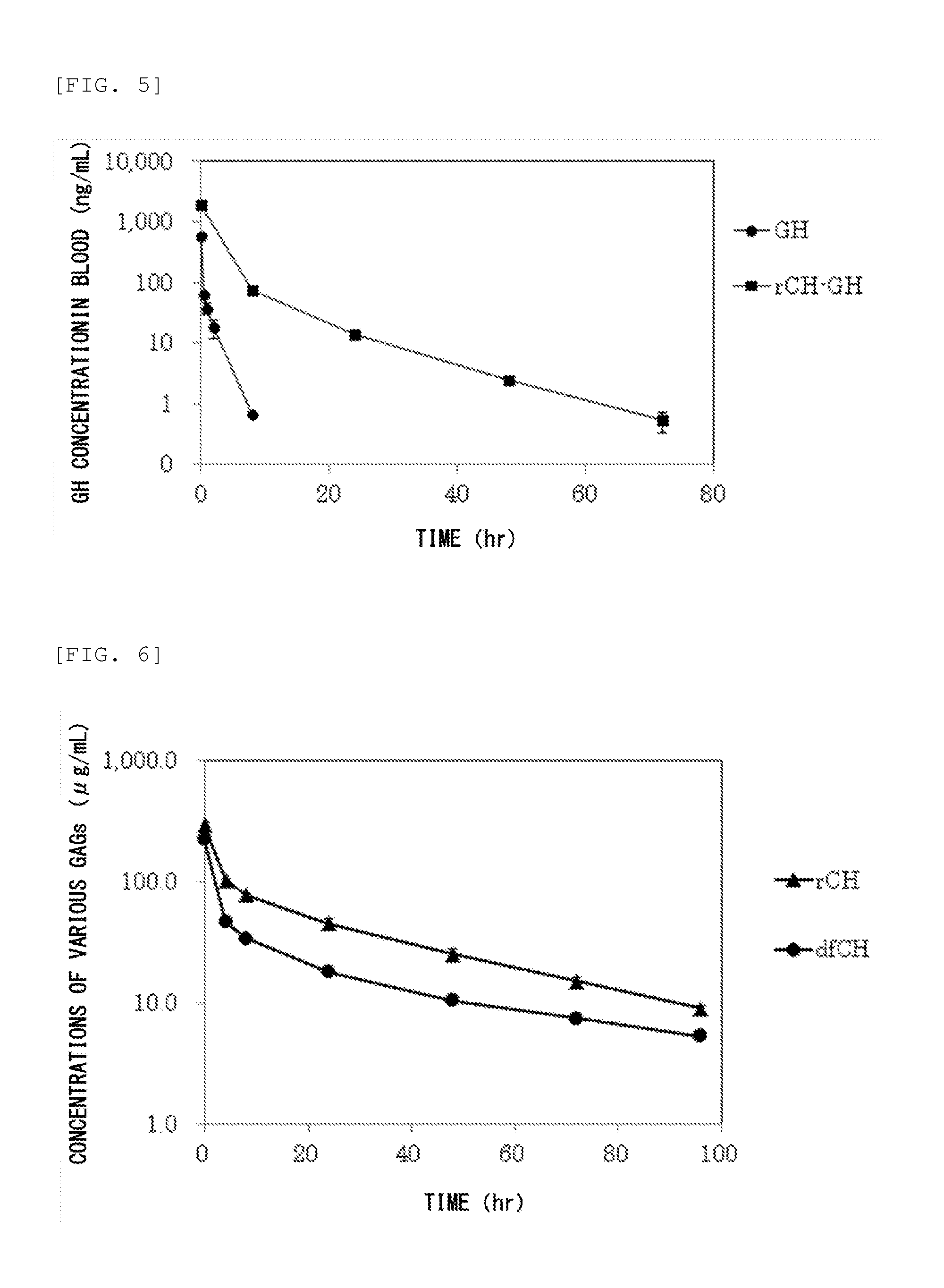Method for improving blood persistence of protein
a technology of protein retention and blood, applied in the direction of peptide/protein ingredients, enzyme stabilisation, drug compositions, etc., can solve the problems of not using chondroitin, and foregoing documents not revealing or suggesting using chondroitin, etc., to achieve the effect of increasing the protein retention in blood
- Summary
- Abstract
- Description
- Claims
- Application Information
AI Technical Summary
Benefits of technology
Problems solved by technology
Method used
Image
Examples
example 1
Production of the Conjugate, Composition, and Preparation of the Present Invention
(1) Production of Microorganism-Derived Chondroitin
[0116]Microorganism-derived chondroitin was produced by using the following procedures according to a known method.
[0117]First, Escherichia coli K-12 W3110 strain (ATCC 27325) was transformed with four copies each of the kfoA, kfoB, kfoC, kfoF, and kfoG genes derived from Escherichia coli K4 strain, one copy each of the kpsF, kpsE, kpsD, kpsU, kpsC, kpsS, kpsM, and kpsT genes derived from Escherichia coli K4 strain, and one copy of the xylS gene derived from Pseudomonas putida to construct an Escherichia coli K-12 MSC702 strain having chondroitin-producing capability. The procedures were performed according to the method described in Patent Document 7.
[0118]NZ amine HD (160 g), Tastone 154 (4 g), MgSO4.7H2O (8 g), Na2SO4 (24 g), sodium citrate (2.4 g), CaCl2.2H2O (296 mg), and Dow 1520 US antifoam (0.8 mL) were dissolved in deionized water to prepare 6...
example 2
Measurement of Retention in Blood of Conjugate of Glycosaminoglycan and Protein
(1) Test Method 1 (Asp)
[0173]The following test was conducted for a test sample containing “Asp” as a protein (a conjugate containing Asp, or the Asp itself).
[0174]The test sample was injected into the tail vein of male ICR mice (three per group) in a dose of 1 mg protein / kg body weight.
[0175]Blood was collected from the mice at hour 8, 24, 48, 72, 96, and 120 after administration, followed by centrifugation to obtain plasma.
[0176]Asp retention in blood was measured by using Asp activity in the plasma as an index. The Asp activity in the plasma was calculated by using, as an index, the amount of ammonia generated when Asp transformed asparagine to aspartic acid. Specifically, 10 μL of the plasma diluted 10 to 40 times was added to 0.1 M Tris buffer (pH 8) containing 200 μL of 2.55 mg / mL asparagine, followed by incubation at 37° C. for 30 minutes. 10 μL of trichloroacetic acid was then added to the reacted...
example 3
Measurement of Glycosaminoglycan Retention in Blood
(1) Production of Defructosylated K4 Polysaccharide
[0235]Defructosylated K4 polysaccharide was produced as follows. Escherichia coli K4 strain (serotype O5:K4(L):H4) was cultured according to the method described in Patent Document 5. The culture supernatant was purified to obtain K4 polysaccharide (fructosylated chondroitin), following the fructose residue was removed (defructosylated) from the K4 polysaccharide by acid hydrolysis reaction in the manner described below as taught in known document (Lidholt K, Fjelstad M., J Biol Chem. 1997 Jan 31; 272(5): 2682-7).
[0236]The K4 polysaccharide (313.9 mg) was dissolved in 30 mL of distilled water, followed by mixed with hydrochloric acid to bring the pH to 1.5. The solution was incubated at 80° C. for 30 minutes, and the fructose residues were removed by acid hydrolysis reaction. After being neutralized, the solution was dialyzed against water, followed by freeze dried to thereby obtain...
PUM
| Property | Measurement | Unit |
|---|---|---|
| Covalent bond | aaaaa | aaaaa |
Abstract
Description
Claims
Application Information
 Login to View More
Login to View More - R&D
- Intellectual Property
- Life Sciences
- Materials
- Tech Scout
- Unparalleled Data Quality
- Higher Quality Content
- 60% Fewer Hallucinations
Browse by: Latest US Patents, China's latest patents, Technical Efficacy Thesaurus, Application Domain, Technology Topic, Popular Technical Reports.
© 2025 PatSnap. All rights reserved.Legal|Privacy policy|Modern Slavery Act Transparency Statement|Sitemap|About US| Contact US: help@patsnap.com



